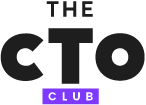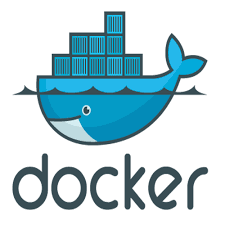Bubble Alternatives Shortlist
Here’s my shortlist of the best Bubble alternatives:
Our one-on-one guidance will help you find the perfect fit.
As someone who's immersed in the world of technology, I understand the challenges you face when you're trying to find the perfect practice management software. Whether you're a startup looking for a robust SaaS solution or a citizen developer aiming to build apps without deep coding knowledge, I've got your back. You're probably seeking an app builder that can effortlessly create web and Android apps, has an open-source orientation for maximum customization, and integrates seamlessly with tech giants like Microsoft.
From my own experiences, the right tool for managing your technology practices should strike a balance between offering sophisticated front-end capabilities and a friendly user interface. It needs to deliver reliable notifications, cater to both on-premises and remote teams and hold its own against popular options like Quickbase. And I promise the benefits of landing on the right software are significant.
Not only does it streamline your workflow, but it also lifts the weight of unnecessary admin tasks from your shoulders. This digital guide is designed to alleviate these pain points and provide you with some excellent options to consider. Let's dive into exploring the best technology practice management software that could be a game-changer for your business.
What Is Bubble?
Bubble is a no-code web app builder that lets you design and launch apps without writing code. It’s mainly used by solo founders, startup teams, and freelancers who want to build custom web apps fast. Visual development, API integrations, and database control help with building, launching, and scaling apps from one place. Overall, Bubble lets you build full web apps without needing engineering resources.
Why Trust Our Software Reviews
We’ve been testing and reviewing SaaS development software since 2023. As tech experts ourselves, we know how critical and difficult it is to make the right decision when selecting software. We invest in deep research to help our audience make better software purchasing decisions.
We’ve tested more than 2,000 tools for different SaaS development use cases and written over 1,000 comprehensive software reviews. Learn how we stay transparent & check out our software review methodology.
Best Bubble Alternatives Summary
This comparison chart summarizes pricing details for my top Bubble alternative selections to help you find the best one for your budget and business needs
| Tool | Best For | Trial Info | Price | ||
|---|---|---|---|---|---|
| 1 | Best for white-label website building with client management tools | 14-day free trial | From $19/month | Website | |
| 2 | Best for automating workflows across multiple applications | Free plan available | From $19.99/month (billed annually) | Website | |
| 3 | Best for single-page websites with a minimalist design ethos | Not available | $7.5/user/month (billed annually) | Website | |
| 4 | Best for integrating business process management with low-code development | Free plan available | Pricing upon request | Website | |
| 5 | Best for aesthetically pleasing website design with e-commerce capabilities | 14-day free trial | From $16/month (billed annually) | Website | |
| 6 | Best for collaborative development with its user-friendly visual modeling | Free plan available | From $58/user/month (5 seats included, billed annually) | Website | |
| 7 | Best for beginner-friendly website building with extensive design templates | Free plan available | From $36/month | Website | |
| 8 | Best for creating native mobile apps without coding | Not available | From $25/user/month (billed annually) | Website | |
| 9 | Best for web design flexibility with visual CSS grid | Free plan available | From $14/month (billed annually) | Website | |
| 10 | Best for intuitive app creation with a drag-and-drop interface | Free plan available | From $50/user/month (billed annually) | Website |
-

Docker
Visit WebsiteThis is an aggregated rating for this tool including ratings from Crozdesk users and ratings from other sites.4.6 -

Pulumi
Visit WebsiteThis is an aggregated rating for this tool including ratings from Crozdesk users and ratings from other sites.4.8 -

GitHub Actions
Visit Website
Best Bubble Alternatives Reviews
Below are my detailed summaries of the best Bubble alternatives that made it onto my shortlist. My reviews offer a detailed look at the key features, pros & cons, integrations, and ideal use cases of each tool to help you find the best one for you.
Duda
Best for white-label website building with client management tools
Duda is a robust website-building platform, widely recognized for its collaborative and scalable features designed specifically for web design agencies and digital publishers. The platform offers capabilities for designing responsive and professional-looking websites without requiring advanced technical skills.
Pros and cons
Pros:
- Offers a widget builder for added functionality
- Includes team collaboration and client management tools
- Tailored for web design agencies and digital publishers
Cons:
- The learning curve for some of its advanced features
- No free plan available
- Higher starting price compared to other alternatives
Zapier is an online automation tool that connects your favorite apps, such as Gmail, Slack, Mailchimp, and more. It can automate repetitive tasks without the need for coding or relying on developers to build the integration.
Pros and cons
Pros:
- Makes automating repetitive tasks straightforward
- User-friendly interface
- Connects with a vast number of apps
Cons:
- Some advanced automations may require a learning curve
- Costs can add up as the complexity of tasks increases
- No free plan, only a limited free trial
Dorik is a user-friendly website builder designed for creating and launching beautiful single-page applications. It offers a clean, intuitive interface and a collection of customizable templates that let users quickly design and deploy their sites.
Pros and cons
Pros:
- Allows for custom CSS
- Easy-to-use drag-and-drop interface
- Tailored for single-page application development
Cons:
- Dependency on integrations for additional features
- Limited scope for multi-page applications
- Might be too basic for complex applications
Appian
Best for integrating business process management with low-code development
Appian is a comprehensive low-code platform that allows businesses to create complex, enterprise-level applications with minimal coding. The platform is designed to help organizations rapidly develop powerful and unique software applications that drive digital transformation.
Pros and cons
Pros:
- Robust integration capabilities
- High-level security and compliance features
- Suited for complex, enterprise-level applications
Cons:
- Customization may require technical expertise
- Might be overwhelming for beginners
- Pricing is not transparent
Best for aesthetically pleasing website design with e-commerce capabilities
Squarespace is a popular website-building platform known for its elegant and visual design templates. It's an ideal choice for creating visually stunning websites, portfolios, and online stores without needing to write a single line of code, which is why it is best for visually-driven websites.
Pros and cons
Pros:
- Good range of integrations
- User-friendly design tools
- High-quality, visually appealing templates
Cons:
- No free plan available
- Customization options may be limited for complex sites
- More costly than some alternatives
Mendix
Best for collaborative development with its user-friendly visual modeling
Mendix is a low-code development platform that provides a complete toolset for building, integrating, and deploying web and mobile applications. It's engineered to cater to both professional developers and non-technical users, which contributes to the platform's flexibility.
Pros and cons
Pros:
- Strong integrations with various systems
- Supports both web and mobile application development
- Comprehensive toolset for full-stack development
Cons:
- Customization may require technical know-how
- Has a steep learning curve
- High cost, especially for small businesses
Wix
Best for beginner-friendly website building with extensive design templates
Wix is an intuitive, drag-and-drop website builder that enables users to create professional and visually appealing websites without any coding knowledge. Its platform is especially useful for small businesses, personal bloggers, and online stores.
Pros and cons
Pros:
- Strong SEO tools
- Wide array of templates and customization options
- User-friendly interface ideal for beginners
Cons:
- Higher-tier plans can be pricier than other platforms
- Can't switch templates after the site is live
- Limited flexibility compared to more advanced platforms
Thunkable is a platform that enables anyone to build their own mobile apps. With a drag-and-drop interface and no need for any coding skills, Thunkable makes the app-building process accessible and manageable.
Pros and cons
Pros:
- Provides numerous integration options
- Allows real-time testing of apps
- Drag-and-drop interface makes building mobile apps easy
Cons:
- Some users may find the interface less intuitive than other platforms
- Limited customization compared to traditional coding
- More complex functions may require some knowledge of coding
Webflow is a powerful tool that allows you to design, build, and launch responsive websites visually. It's incredibly user-friendly, catering to both novices and professionals and is especially acclaimed for enabling the creation of visually stunning websites.
Pros and cons
Pros:
- Wide range of integrations for extended functionality
- Built-in CMS and E-commerce features
- Visual CSS designer for precise design control
Cons:
- Higher-tier plans can get expensive
- Limited built-in widgets compared to some competitors
- Learning curve can be steep for non-designers
Adalo is a potent no-code platform designed to streamline the mobile app development process. It's renowned for its intuitive drag-and-drop interface, which makes it an ideal choice for anyone looking to create apps with ease.
Pros and cons
Pros:
- Allows publishing directly to app stores
- Extensive library of pre-built components and templates
- Drag-and-drop interface simplifies app creation
Cons:
- Loading times can occasionally be slow
- Lacks some advanced customization features
- Pricing could be prohibitive for smaller projects
Other Bubble Alternative Tools
Below is a list of additional Bubble alternatives I shortlisted but did not make it to the top 10. Definitely worth checking them out.
- Carrd
For simple, responsive one-page sites with a lean setup
- OutSystems
For rapid development and deployment of enterprise-grade apps
- WordPress
Good for content-heavy websites
- Weebly
Good for beginners in web design
- Betty Blocks
Good for building applications with no-code
- Shopify
Good for creating online stores
- Glide
Good for building mobile apps from Google Sheets
- AppGyver
Good for developing enterprise-grade applications
- Tadabase
Good for creating web-based data-driven applications
- Retool
Good for building internal tools rapidly
- Unqork
Good for complex business application development
- Vinyl
Good for rapid multi-platform application development
Other Software Reviews
Selection Criteria for Bubble Alternatives
I've had the opportunity to evaluate and try out dozens of no-code web development tools. Each of these tools has its unique strengths, and I've narrowed down the list to the ones that excel in core functionality, key features, and usability - aspects that I've found critical when choosing a no-code web development platform.
Core Functionality
No-code web development tools should enable you to:
- Create responsive web applications without coding
- Manage data sources and integrate with APIs
- Implement user authentication and permissions
- Design interactive interfaces with a drag-and-drop editor
Key Features
Key features to look for in no-code web development tools include:
- Visual Interface: This enables you to design applications without needing to write code. You should be able to drag and drop components, create user interfaces, and define functionality visually.
- Data Management: The tool should have robust data management features to handle data sources and databases and integrate with APIs easily.
- Authentication and Permissions: User management is crucial for many applications. The tool should provide options for managing users and defining roles and permissions.
- Integration Capabilities: Integration with third-party services, such as email providers, payment gateways, CRMs, etc., provides extended functionality to your applications.
Usability
In terms of usability, no-code web development tools should focus on:
- Ease of Use: Since these tools are aimed at people with no coding experience, they should have intuitive interfaces and a short learning curve.
- Onboarding Process: Comprehensive onboarding materials, tutorials, and examples are important to help new users get started quickly.
- Customer Support: Responsive and helpful customer support can be invaluable, especially for users who are new to web development.
- Community: A large and active community can provide assistance, share resources, and offer inspiration for what can be achieved with the tool.
Why Look for a Bubble Alternative?
Bubble is a no-code platform that democratizes software development, enabling entrepreneurs, creatives, and businesses to build web applications without needing to write code. It's perfect for those who want to quickly transform ideas into functional software without the need for technical expertise.
However, its one-size-fits-all approach may not cater to the specific needs of every user. For instance, some might be seeking more niche functionality, a different pricing model, or a tool that caters better to their specific industry or use case. That's where exploring alternatives to Bubble becomes essential.
Bubble Key Features
Here are some of the key features of Bubble, to help you contrast and compare what alternative solutions offer:
- Plugin marketplace: Gives you access to third-party tools to extend your app’s features.
- Visual editor: Lets you design and customize your app layout using drag-and-drop.
- Workflow builder: Helps you set up logic and actions that run when users interact.
- Database management: Lets you create, store, and manage app data with no code.
- Responsive design tools: Helps you adjust how your app looks on different screen sizes.
- API connector: Allows you to connect your app to external services and data sources.
- Reusable components: Lets you create custom elements you can use throughout your app.
- Version control: Gives you tools to test updates and roll back changes safely.
- User authentication: Helps you set up sign-up, login, and user roles without coding.
- Deployment tools: Lets you publish updates and manage live vs. development versions.
Summary
In summary, Bubble is a powerful tool for building web applications without the need for coding knowledge. However, it's not always the right fit for every use case, which is where the listed alternatives come into play.
When deciding on an alternative, it's crucial to consider the tool's core functionality, key features, and usability. Look for a solution that aligns with your specific requirements and workflow. This could range from simple single-page applications, eCommerce platforms, complex enterprise-level applications, or even platforms specializing in mobile app development.
Key Takeaways:
- Understand Your Needs: Before choosing an alternative, it's essential to define your needs and goals. Whether it's an easy-to-use drag and drop app builder, rich integrations, or specific industry-focused solutions, knowing what you need will guide your decision.
- Consider the Cost: Pricing varies widely among these tools, so it's crucial to evaluate what you're getting for your investment. Remember to look for a solution that offers the right balance of cost and functionality for your budget.
- Look at Long-Term Value: Consider not just the immediate needs but also long-term value. Factors such as scalability, support, community, and learning resources can greatly influence the value you get from your chosen platform over time.
What do you think?
What do you think about these Bubble alternatives? Each has its own strengths and use cases, and the best choice largely depends on your specific needs and objectives. But, of course, the world of no-code and low-code development is vast and rapidly evolving, so there may be other fantastic options out there.
If you're using or are aware of a great tool that I missed, please let me know. Your suggestion could help other readers find their ideal solution.
























